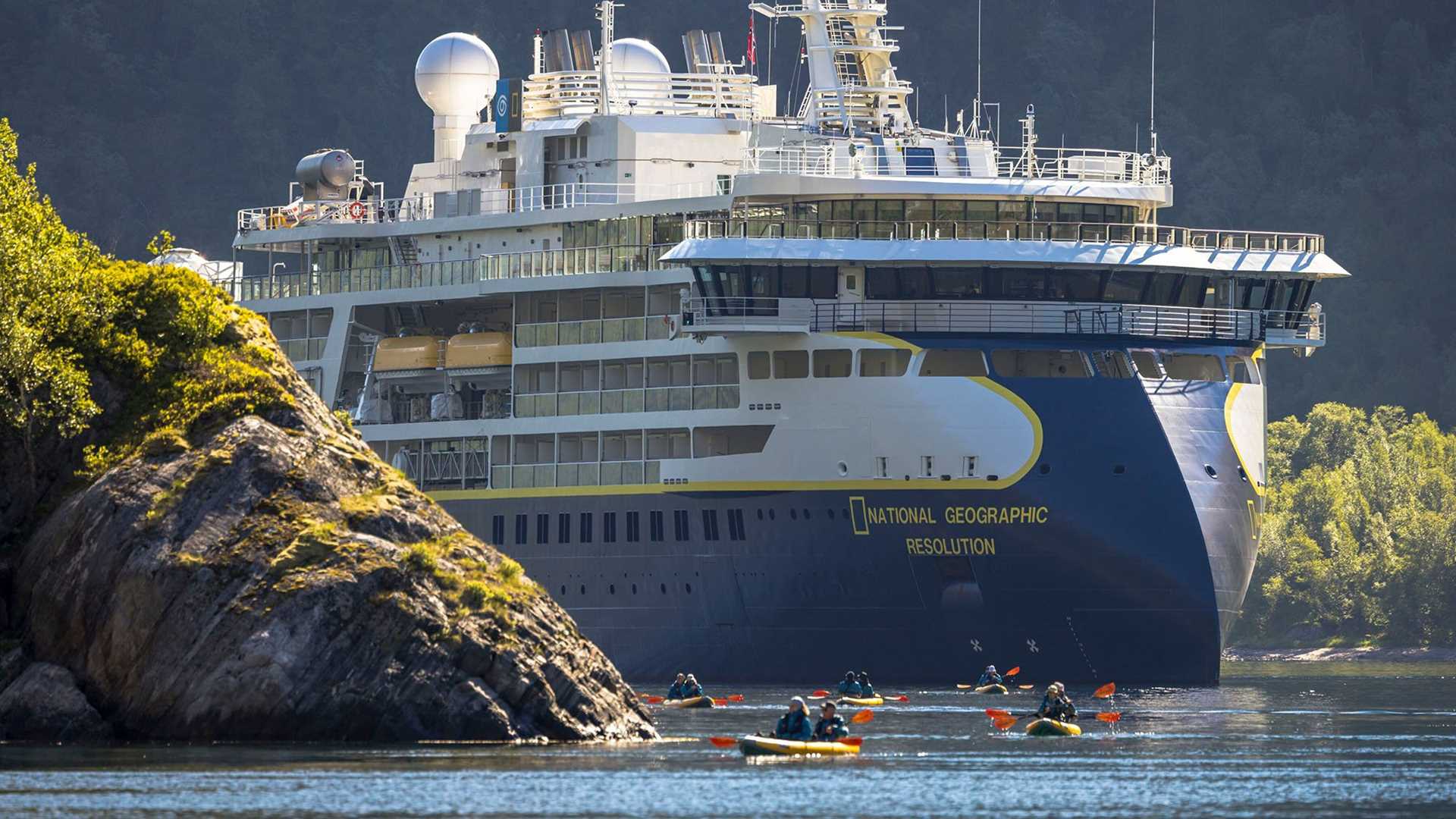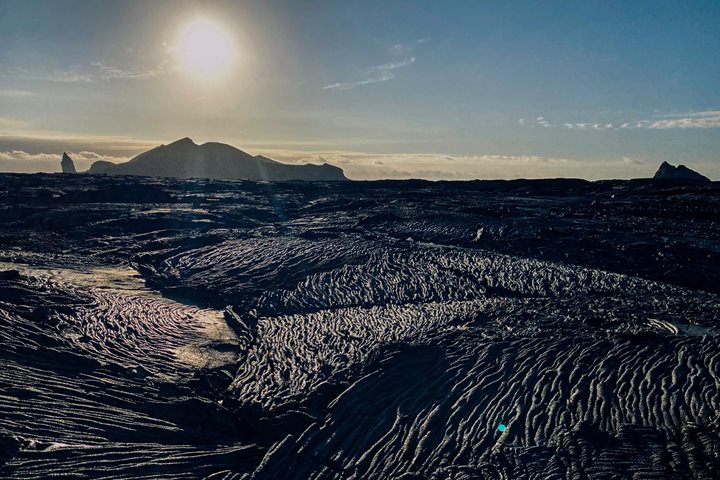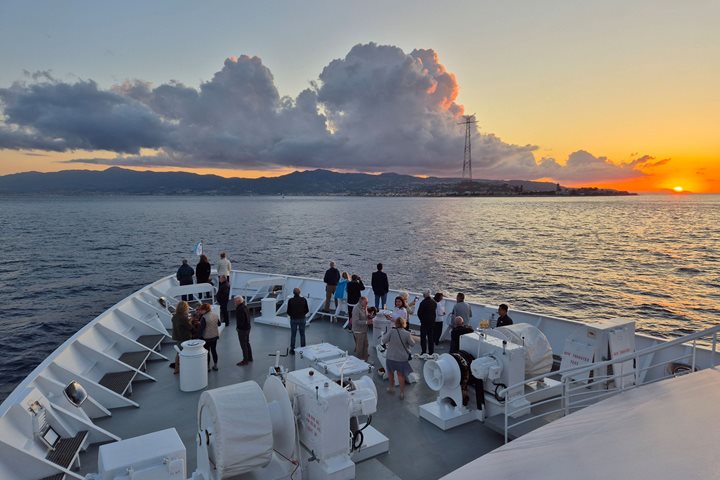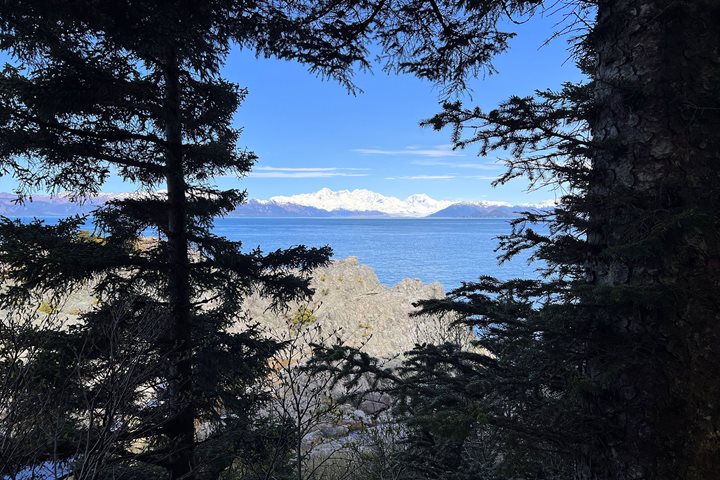El Dorado River, Peru
Wild Peru Escape: Amazon & Machu Picchu, June 2, 2022

Three-toed sloth and baby. —Jonathan Aguas, Naturalist/Certified Photo Instructor
Kelp Bay, Alaska
Exploring Alaska's Coastal Wilderness, June 2, 2022

Blackrock fish were seemingly unbothered by the ROV (remotely operated vehicle) swimming right up to it. —Amy Malkoski, Naturalist/Expedition Diver
Pacaya River, Peru
Wild Peru Escape: Amazon & Machu Picchu, June 3, 2022

The miniscule ferruginous pygmy owl is rarely seen. In addition to being so small, its camouflaged coloration makes this species difficult to spot and photograph. I spent more than ten minutes on the skiff’s bow looking for the best angle among many branches, trying to find a small gap to photograph this rare rainforest owl. —Carlos Romero, Expedition Leader
Haines, Alaska
Wild Alaska Escape: Juneau to Ketchikan, June 5, 2022

Taking off from Haines Airport this morning, we had the privileged opportunity to fly over the northeast quadrant of Glacier Bay National Park. Climbing through the verdant Chilkat River Valley, past outwash plains of glacial debris, through a thin band of clouds cradling the surrounding peaks and onto the plateau of the Brady Icefield (at around 5,000’), we transitioned from post-glacial to glaciated in mere minutes. What would have taken me a full day back when I was a young, poor, ice-crazed photographer was laid out before me in the blink of an eye. —Eric Guth, Naturalist/Certified Photo Instructor
Inian Islands, Alaska
Exploring Alaska's Coastal Wilderness, June 9, 2022

A pelagic cormorant in breeding plumage goes to search for nesting material. —Ben Shulman, Naturalist
Santa Cruz Island, Galápagos
Galápagos Aboard National Geographic Endeavour II, June 9, 2022

Saddleback giant tortoise. —Christian Saa, Naturalist/Certified Photo Instructor
Nordfjorden, Norway
Coastal Wonders of Norway, the Faroe Islands and Iceland, June 10, 2022

Kayakers enjoyed stunning conditions for exploring in the fjord. —Andrew Peacock, Naturalist/Certified Photo Instructor
Cerro Dragon, Galápagos
Wild Galápagos Escape, June 11, 2022

Galapagos painted locust on the vegetation in the forest. —Ramiro Adrian, Naturalist
Ushk Bay, Alaska
Exploring Alaska's Coastal Wilderness, June 11, 2022

Yellow pond lily. —Jim Pfitzer, Naturalist/Certified Photo Instructor
Eastern Svalbard, Norway
Land Of The Ice Bears: An In-Depth Exploration Of Arctic Svalbard, June 12, 2022

A polar bear peacefully sleeping on an ice floe near Austfonna ice cap. —Carl Erik Kilander, Naturalist
Floreana Island, Galápagos
Galápagos Aboard National Geographic Endeavour II, June 13, 2022

It is a rare sight to see greater flamingos flying—we were all delighted to see this elegant bird in flight. It is wonderful to see the thin legs fully alight, with the long neck and the beautiful black feathers of their wings. Flamingos can fly long distances. —Vanessa Gallo, Naturalist
Foula, Shetland Islands, Scotland
Coastal Wonders of Norway, the Faroe Islands and Iceland, June 13, 2022

We sailed to Foula Island, one of the United Kingdom’s most remote permanently inhabited islands with a population of about 35 people. After an early dinner, we landed on the island in a very wet mist, which conveniently stopped a few minutes after arrival. Our guided hike on the moors and low along broken coastal cliffs was filled with wildflowers (including carnivorous flowers), sheep, and nesting fulmars. —Jim Coyer, Naturalist/Expedition Diver
Santa Cruz Island, Galápagos
Galápagos Aboard National Geographic Endeavour II, June 14, 2022

Tortoises are most active from 8:00 to 17:30, and after this they move to areas partly secluded by vegetation or rocks where they sleep. During the day, they actively move in search of food. They also like long naps, and they can spend up to two days resting while regulating their body temperature in waterholes, especially during the dry season. —Africa Berdonces, Naturalist
Faroe Islands
Coastal Wonders of Norway, the Faroe Islands and Iceland, June 14, 2022

A team of traditional Faroese rowers practicing in front of the stunning landscape. —Jamie Coleman, Naturalist
San Cristobal, Galápagos
Wild Galápagos Escape, June 14, 2022

Sea lions differ from seals because they can use their rear flippers to walk on land, and also because they carry external ear lobes and external reproductive organs. —Bernardo Jacome, Naturalist




